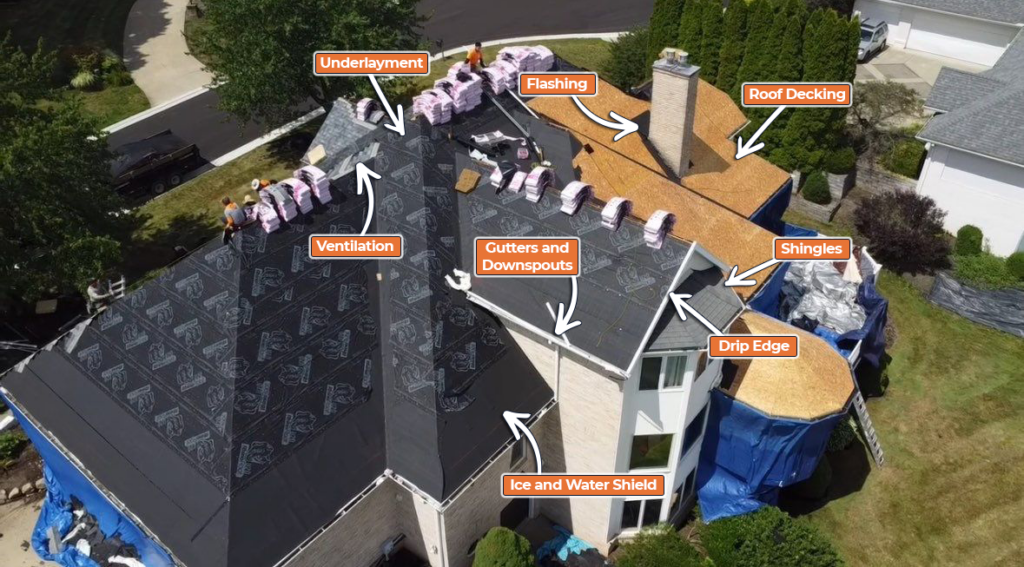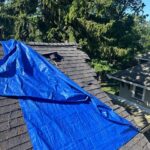What Makes a Roofing System?
When people think about a roof, they often picture the shingles that cover the top of a home. However, a roof is much more than just shingles. Designed to protect your home from the elements, a roofing system helps maintain energy efficiency and ensure structural integrity. In this blog, we’ll explore what a roofing system is and why each component is essential to keeping your home safe and secure.
First Components of a Roofing System
- Roof Decking
- The roof decking, or sheathing, is the primary base of a roof. Think of it as the first layer of your roof, which supports everything else that is on top of it. Roof decking, made of plywood or oriented strand board (OSB), and provides a solid foundation for the roofing materials.
- Underlayment
- Positioned directly on top of the roof decking, the underlayment acts as a secondary barrier against moisture. Made from materials like felt or synthetic fabrics, it helps prevent water from seeping through the roof and causing damage. Water damage can be devastating, so this is a very important and crucial step in a roofing system.
- Ice and Water Shield
- In regions prone to ice or heavy rainfall such as Ohio, an ice and water shield is valuable. Applied along the roof edges, valleys, and other areas of your home, ice and water shireld works to provide extra protection against water that could seep into your home.
- Shingles
- Shingles are the most visible part of a roofing system and come in various materials such as asphalt, wood, metal, and slate. They act as the primary defense against weather elements like rain, snow, and UV rays. Shingles also contribute to the aesthetic appeal of your home. There are many different colors to choose from, as well as different durations in which they will last.
Second Components of a Roofing System
- Flashing
- Flashing gets installed around different parts of your roof like chimneys, vents, and skylights. It directs water away from these areas, preventing leaks and water damage.
- Proper roof ventilation is crucial for maintaining the upkeep of your roofing system and your home’s interior. It allows air to circulate, which reduces moisture buildup in the attic and prevents problems like mold growth and wood rot which can significantly damage the integrity of your home.
- Drip edge, a metal strip installed along the edges of the roof, moves water away from the fascia and into the gutters. Drip edge helps prevent water damage to your home.
- While not technically part of the roof itself, gutters and downspouts play a vital role in the roofing system. They move the water away from your home, protecting the foundation and preventing issues like basement flooding.

Why a Complete Roofing System Matters
Each component of a roofing system works together to provide protection for your home. If one part is missing or damaged, it can set the entire system off track, which can lead to costly repairs and potential damage to the inside of your home. Investing in a complete roofing system will make sure that your roof performs at its best, offering long-lasting protection.
A roofing system is more than just shingles; it’s a combination of things that work together to protect your home. Understanding the different parts of a roofing system can help you make informed decisions when it comes to roof maintenance, repairs, or replacement. If you’re considering a new roof or need help with your current one, The Third Estimate is here to guide you through every step of the process, ensuring your home stays safe and secure.







